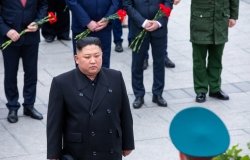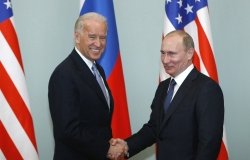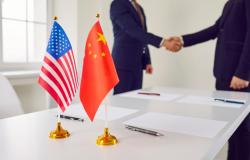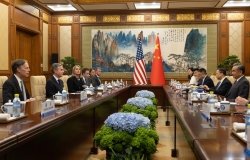Managing U.S.-China Relations: Reccommendations for the New American Administration
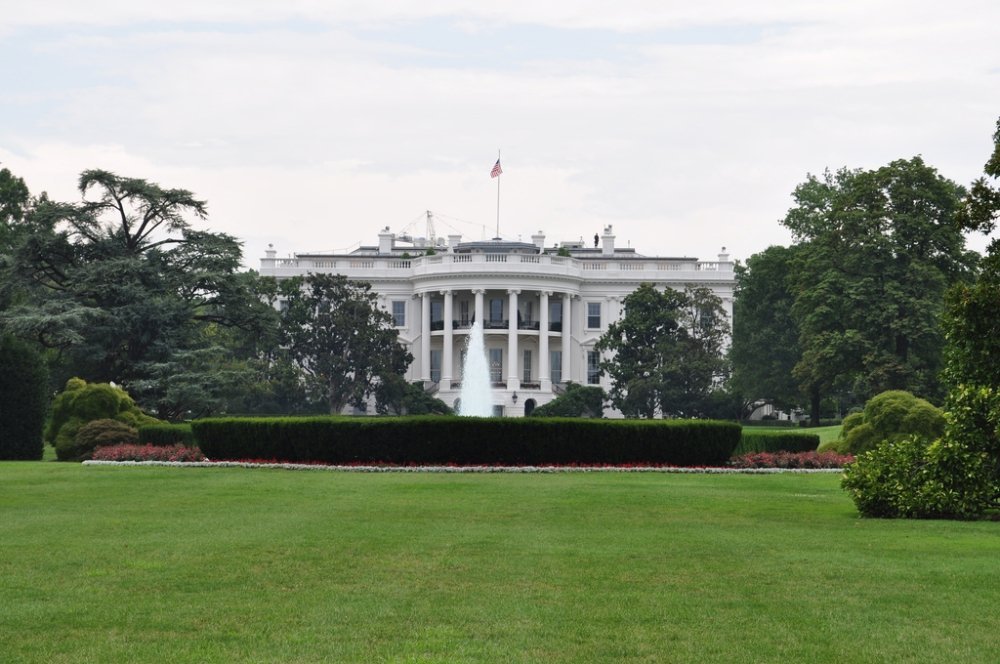
This article was originally published in Committed: U.S. Foreign Policy in Asia and Completing the Rebalance
- The China Challenge
U.S. policymakers must assume that China’s rise will prove sustainable despite the domestic and foreign difficulties confronting the Chinese Communist Party (CCP). The pace of China’s development doesn’t matter much; the law of large numbers means that China’s growth and expansive appetites will be major U.S. concerns for decades. As the Earth Policy Institute’s Lester Brown has said, “1.3 billion times anything equals a whole hell of a lot.” Yes, and 1.3 billion times China’s purchasing power, talent, geostrategic ambition, and persecution complex equals something larger still.
As a wealthy continental power, China’s military expansion is neither unexpected nor unreasonable. The PRC depends on the sea lanes of the Western Pacific for food, energy, and natural resources. Now that it can protect this vital trade for itself, it is no longer content to rely on American good offices for its security. It is building aircraft carriers, submarine bases, and islands that call into question the durability of the U.S.-led balance of power that has benefited the region for over seventy years. Oddly, China now feels less secure than it did before it became the world’s top trading nation. Having invited the U.S. into China forty years ago to provide investment, technology, and expertise, and having sent three generations of students to America’s obliging universities, China now claims that the U.S. is trying to harm it.
China’s insecurity may sound unwarranted—why would anyone invade China?—but it cannot be wished away. Because China’s perception of insecurity is destabilizing even if it is unfounded, China must play a larger role in the security architecture of the Asia Pacific. The difficulty is that any meaningful alteration to that architecture could threaten America’s core interests in the region: exercising freedom of navigation and honoring treaty commitments to allies. Failing in either task would call America’s power into question and could result in a nuclear arms race in northeast Asia.
Managing the United States’ and China’s conflicting interests in the Western Pacific is the greatest challenge in the bilateral relationship confronting the next president. The president must work with allies, and with China, to ask: What can the U.S. do to decrease China’s threat perceptions (or curb its ambitions) in the Western Pacific such that China will be mollified and not emboldened? No workable answer to that unavoidable question has yet been proposed[i]. In its absence we have a dangerous muddle of mutual bombast, testing, and potentially lethal games of chicken.
The reason no plausible answer to this question has been hazarded is that the United States and most of China’s neighbors assume that China cannot be mollified: it will interpret any adjustment to the regional security structure as a weakness to be exploited rather than as a step toward peace. The assumption is that China is determined to become the regional hegemon, which it cannot do if the United States remains the primary strategic actor in the Western Pacific and honors its commitments to its allies (Japan, South Korea, the Philippines, Australia, Thailand) and to Taiwan. This assumption is fueled on a nearly weekly basis by Chinese statements and actions, despite China’s declaration of a “peaceful rise” and Xi Jinping’s assertion that “seeking hegemony is not in the genes of the Chinese people.” For its part, the PRC is convinced that American policy is to encircle and contain China, regardless of the U.S. claim that it seeks only a rules-based order that promotes peace and prosperity.
China’s leaders believe that a Sino-centric Asia is natural, inevitable, and desirable. Natural means China can’t be blamed for seeking a hegemony that is its birthright. Inevitable means resistance is futile. Desirable reflects China’s confidence that it will be a benign hegemon.
On the count of inevitability, many nations fear that China may be right.
- Policy Frameworks
Possible American approaches to this challenge fall along a strategic/linguistic spectrum:
- Acknowledgement: the U.S. admits that changes in China require changes to the security architecture
- Adjustment: the U.S. and its allies allow an enhanced Chinese role within the existing architecture
- Accommodation: the U.S. pulls back from some traditional regional commitments to placate China
- Appeasement: The U.S. allows China to play a larger regional role than itself
- Abandonment: The U.S decides it can no longer be a guarantor of security in the Western Pacific
Depending on regional developments and changes within China, there is a range of solutions that might prove acceptable to the U.S. There are interests in Washington, however, which claim that even acknowledging China’s security needs is tantamount to appeasement. This view is as dangerous as the belief of some Chinese that only American appeasement or abandonment are acceptable to the PRC.
U.S.-China relations are a complex, uncertain dynamic in which (A) China learns to be a responsible world power despite its instinctive insularity, and (B) the United States adapts to Chinese power and to multilateralism despite its preference for preeminence. To manage this relationship, the next President will need advisors who approach China on multiple tracks. The following frameworks are essential to U.S. China policy, but none offers a solution to the primary challenge described above. The frameworks must be balanced day-to-day, with security issues foremost in mind:
Security
The two nations face a security dilemma in the Western Pacific which can be managed, but not solved. The United States must continue to uphold freedom of navigation and to strengthen its regional alliances and partnerships. China’s proximity, will, capability, and legitimate interests demand, however, that the U.S. be prepared for China to play a larger military role in the region.
World Order
The U.S. and China now assess their power based on their ability to influence regional and world orders through (1) shaping laws, norms, and practices; (2) building multilateral institutions; and (3) providing international public goods. The U.S. should acknowledge China’s contributions to global welfare in all of these areas, but it must also remain vigilant. It has become clear that China’s instinct and strategic preference is to treat individuals, information, and institutions in the international realm as it treats them at home. China seeks, often in tandem with Russia, to have its authoritarian domestic practices accepted as alternatives to modern, liberal norms on the global stage. The U.S. should oppose such encroachments as adamantly as it opposes Chinese militarization of the South China Sea.
The Values Debate
The U.S. and China are not merely strategic competitors; they are engaged in an ideological contest as well. Each wants other nations to espouse values similar to its own in order to reduce obstacles to their strategic ambitions. The U.S. pursues this goal with missionary zeal, while China is more transactional, but both governments describe their domestic legitimacy and global leadership in moralistic terms. The U.S. stresses individual freedom and political pluralism, while China inclines toward collective stability under an authoritarian state. These opposed visions produce ideological distrust that pervades the relationship, coloring judgements of each other’s intentions and limiting scope for cooperation. Ideological distrust clearly drives debates about human rights and civil society, but it also underlies Chinese accusations of American hegemony and American warnings about China’s assertive foreign policy. The U.S. has the upper hand in the values debate—in global soft power. It should protect that advantage through strengthening its democratic institutions, welcoming immigration, investing in infrastructure and research and development, improving its public schools, ensuring that its system of higher education remains the best in the world, and narrowing economic and social disparities within its own borders. Progress toward these goals will enable the U.S. to continue to inspire China’s own human rights advocates.
Managing Perceptions: Rise & Rebalance
The U.S. and China both think that most friction in the relationship is the fault of the other side. This attitude breeds diplomacy (and, in China’s case, propaganda campaigns) that is too often based on finger pointing, shaming, and the claiming of moral high ground. Mutual distrust might diminish if both sides would acknowledge what is reasonable in the other’s core interests. Americans should understand that China’s rise is legitimate and results, in the main, from the Chinese people’s desire to flourish, which the U.S. has encouraged and enabled. China should admit that the rationale for the U.S. Rebalance—American interests are concentrated in Asia and will likely remain there—is uncontestable. If Washington regularly tells Americans that the intent of China’s actions, if not all of their effects, is to benefit Chinese and not to threaten foreigners, and if Beijing does the same with regard to American policy, public and elite perceptions of the relationship will improve in both countries and national governments will have greater scope for compromise.
Cooperation
The bilateral relationship has always been competitive and cooperative. Since 1979, it has been American policy, under Democratic and Republican administrations, to keep a thumb on the cooperative side of the scale. As U.S. global influence declines relative to China’s, this is harder to do. Still, cooperation must be expanded. By working together to combat climate change and pandemics, to improve the terms of investment and trade, to provide public goods, and to enhance communication between militaries, the U.S. and China foster perceptions and strategic dispositions without which the security dilemma in the Western Pacific cannot be managed well. Both sides should be careful not to overstate the benefits of cooperation, however. Presenting rosy scenarios to Chinese and American publics will leave politicians and citizens alike ill-prepared to face unpleasant realities and to make trade-offs that may be necessary to avoid conflict.
Implications of China’s Purchasing Power
China has a larger middle class than the U.S. Its corporations can scale up new technologies faster than the American companies that invent them. Because of its market and manufacturing power, China will increasingly be the tastemaker to the world: Chinese consumers will influence what Americans see on their store shelves, their dinner plates, and their screens. Through global markets, Chinese talent and traditions will enrich American culture, but there are dangers, too: as American filmmakers, game designers, publishers, and tech companies pursue Chinese profits and design products to accord with Chinese law, China is handed a channel through which it can export censorship to the rest of the world. A blockbuster isn’t a blockbuster if it doesn’t play in China, and it can’t play in China unless the State Administration of Press, Publication, Radio, Film, and Television clears the script. Welcome to Chinese Communist Party storytelling, aesthetics, and encryption. Welcome to boring, and worse. This pernicious effect of trade results from the market decisions of free U.S. companies, and cannot be regulated. It is an emerging threat to American freedom of speech and cultural dynamism just the same. It also harms American soft power; American art and entertainment that is acceptable to China’s grim officials will be less attractive to Chinese consumers, who enjoy it precisely because it is exuberant and free.
Continued Engagement
Over the past three years, American critics of engagement have attacked this bipartisan policy because of its purported failure to bring Chinese practices in line with modern liberal norms. This is a straw man; no serious proponent of engagement ever claimed that it would turn the Chinese into Americans—the argument was that engaging was better than isolating the U.S. from China. Engagement does not give Washington policy levers it can pull at certain times to achieve distinct outcomes, but keeping American models present to Chinese and inviting China into multilateral organizations—which engagement does do—has improved the lives of Chinese in ways that advance American interests. Engagement is catalytic, gradual, and uncertain. Through engagement, the U.S. gets less than it would like and China gets more than it bargained for. The next president should strengthen engagement with China—corporate, cultural, professional, and academic—in confidence that engagement serves U.S. goals, even if its success can’t be precisely measured.
- Recommendations
A near-consensus of minimal steps the United States should take to ensure constructive relations with China has emerged over the past eight years. This program, which is essential, is summarized below. Several recommendations particular to the Kissinger Institute follow. Advice on economic and trade policy and on technical aspects of military and cyber relations should be sought from experts in those areas.
“Consensus” Recommendations
- Rebuild American credibility (political, economic, military, cultural) through domestic budgetary and tax reform, addressing income inequality and social injustice, investing in U.S. infrastructure, R&D, and education at all levels, and maintaining American pluralism and openness.
- Strengthen the Rebalance to Asia by committing more resources to the region, particularly on the diplomatic and economic fronts.
- Ratify the UN Convention on the Law of the Sea to build U.S. credibility in maritime disputes.
- Ratify the Trans Pacific Partnership at the earliest possible date
- Strengthen regional alliances by improving allies’ capabilities and maritime domain awareness.
- Strengthen partnerships with India, ASEAN, and the European Union.
- Continue strong support for Taiwan under the Taiwan Relations Act and One China policy.
- Broaden and deepen engagement with China by supporting the China exchange programs of local governments, universities, NGOs, and professional associations.
Additional Recommendations of the Kissinger Institute on China and the United States
- The U.S. must conduct a comprehensive study of its ability to achieve its declared goals in Asia over the next 50 years in light of:
- China’s growing economic and military strength
- America’s looming structural budgetary crisis and low growth rate
- The complexity and urgency of U.S. commitments and security concerns worldwide
- The willingness of U.S. citizens to bear the cost of retaining strategic primacy in Asia-Pacific
If the U.S. cannot afford its Asian commitments over the long-term, those commitments must be modified. Bluffing invites conflict, as Beijing will measure American power in the region carefully even if the U.S. does not conduct the recommended self-audit.
- Launch a dialogue with North Korea, without preconditions.
- Deepen U.S.-China dialogues on nuclear policy to ensure that the logic of mutual assured destruction does not drive bilateral nuclear escalation.
- Provide sustained, robust budgets for Chinese-language study (and study of other critical languages) in American public schools, beginning at the primary level.
- Strengthen U.S.-China cooperative provision of global public goods, including joint work on disaster relief, environmental protection, public health, and food and consumer product safety.
[i] The best treatment of the subject to date was offered by Michael Swaine of the Carnegie Endowment for International Peace in 2015 (http://carnegieendowment.org/2015/04/20/beyond-american-predominance-in-western-pacific-need-for-stable-u.s.-china-balance-of-power-pub-59837). His recommendations were viewed as non-starters by readers at the Pentagon.
About the Author

Robert Daly
Robert Daly, the Director of the Wilson Center’s Kissinger Institute on China and the United States, has compiled an unusually diverse portfolio of high-level work: He has served as a US diplomat in Beijing; as an interpreter for Chinese and US leaders, including President Carter and Secretary of State Kissinger; as head of China programs at Johns Hopkins, Syracuse, and the University of Maryland; and as a producer of Chinese-language versions of Sesame Street. Recognized East and West as a leading authority on Sino-US relations, he has testified before Congress, lectured widely in both countries, and regularly offers analysis for top media outlets.
Read More
Kissinger Institute on China and the United States
The Kissinger Institute works to ensure that China policy serves American long-term interests and is founded in understanding of historical and cultural factors in bilateral relations and in accurate assessment of the aspirations of China’s government and people. Read more

Indo-Pacific Program
The Indo-Pacific Program promotes policy debate and intellectual discussions on US interests in the Asia-Pacific as well as political, economic, security, and social issues relating to the world’s most populous and economically dynamic region. Read more
